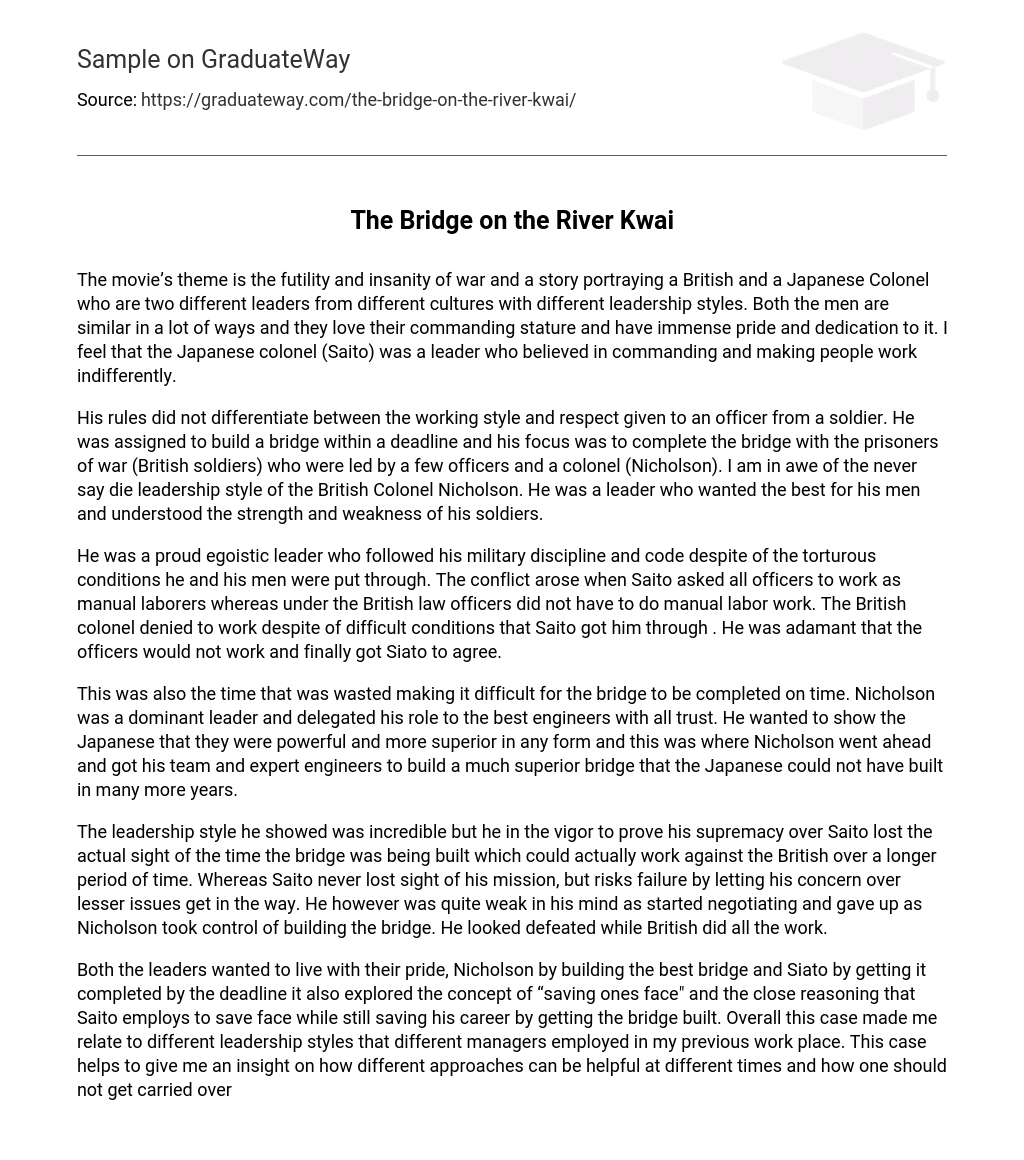The movie revolves around the theme of war’s futility and insanity. It narrates the story of two Colonels, one British and one Japanese, originating from diverse cultures with distinct leadership approaches. Despite their disparities, both men exhibit many similarities and an unwavering dedication to their authoritative roles, taking immense pride in them. Personally, I interpret Colonel Saito, the Japanese leader, as someone who values giving orders and ensuring unbiased work performance.
Colonel Nicholson, a British officer, had a leadership style that treated officers and soldiers equally in terms of working style and respect. His task was to build a bridge within a specific timeframe, and he focused on completing the project with the assistance of prisoners of war (British soldiers), who were supervised by a few officers including himself. I am amazed by Colonel Nicholson’s consistent leadership approach which prioritized the welfare of his men and demonstrated an extensive understanding of their abilities and limitations.
He was a proud and egotistic leader who followed his military discipline and code, even in torturous conditions. The conflict arose when Saito demanded that all officers work as manual laborers, although British law exempted officers from such work. The British colonel refused to work despite the difficult conditions imposed by Saito. He remained stubborn in his decision that officers should not have to work and eventually convinced Saito to agree.
During this time, the completion of the bridge was hindered by time wasted. Nicholson, a dominant leader, entrusted his role to the best engineers in whom he had complete faith. His intention was to demonstrate the superiority and power of the British over the Japanese. Hence, Nicholson assembled a team of expert engineers to construct a far superior bridge that would have taken the Japanese many more years to build.
The leadership style displayed was remarkable, but in his desire to assert dominance over Saito, he overlooked the duration of the bridge construction. This oversight could possibly work against the British in the future. On the other hand, Saito remained focused on his mission, but jeopardized success by allowing smaller issues to hinder progress. However, he showed vulnerability when Nicholson took charge of building the bridge, appearing defeated as the British completed all the work.
Both leaders, Nicholson and Siato, had their own priorities. Nicholson aimed to construct the finest bridge, while Siato aimed to achieve its completion within the given deadline. The concept of “saving face” is also explored, highlighting Saito’s deliberate decision-making to preserve his reputation while ensuring the successful construction of the bridge. This case reminds me of the various leadership styles I encountered in my previous workplace. It provides valuable insights into the effectiveness of different approaches in different situations and emphasizes the importance of not losing sight of the overall objective.





